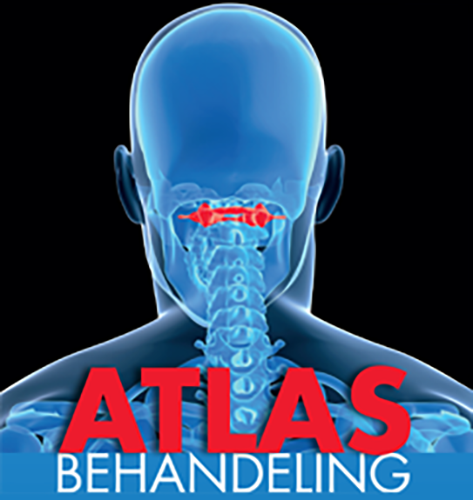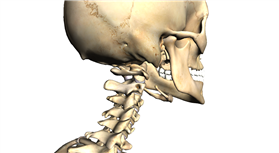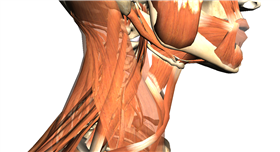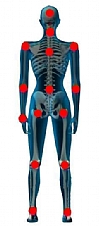Starting position
"Slight disbalancing with serious consequences"
With many people, their head is to a greater or lesser extent asymmetrically positioned on the first cervical vertebra. This is often the result of rough manipulation during childbirth (certainly in cases where the umbilical cord is wrapped round the neck, or where a suction cup or forceps were used) or subsequent traumata (mechanical or psychological), which have provoked a reflex muscle-defence reaction in the upper neck muscles.
Because these upper neck muscles initiate and coordinate the entire upright position, small deviations at this high level lead to compensating positions with extra muscle tension at various points lower down in the body.
Depending on the seriousness of the misalignment and deteriorations caused by constitution and trauma (concussion or whiplash, as well as cumulative psychological stress), this extra tension in the muscles results in symptoms of varying intensities.
In addition to extra muscle tension, an atlas which is not properly positioned can also result in a narrowing of the opening between the skull and spinal cord canal, which is then responsible for increased pressure on the cerebral membranes [dura and pia mater] and the vertebral arteries, and unsteady pulsation of the spinal cord fluid. These factors can play a major role in several types of headache, irritation of the cranial nerves, spinal cord irritation in the lower back, and so on.
 "" alt="atlasbehandeling">
"" alt="atlasbehandeling">
 Nederlands
Nederlands Français
Français English
English Deutsch
Deutsch Español
Español


